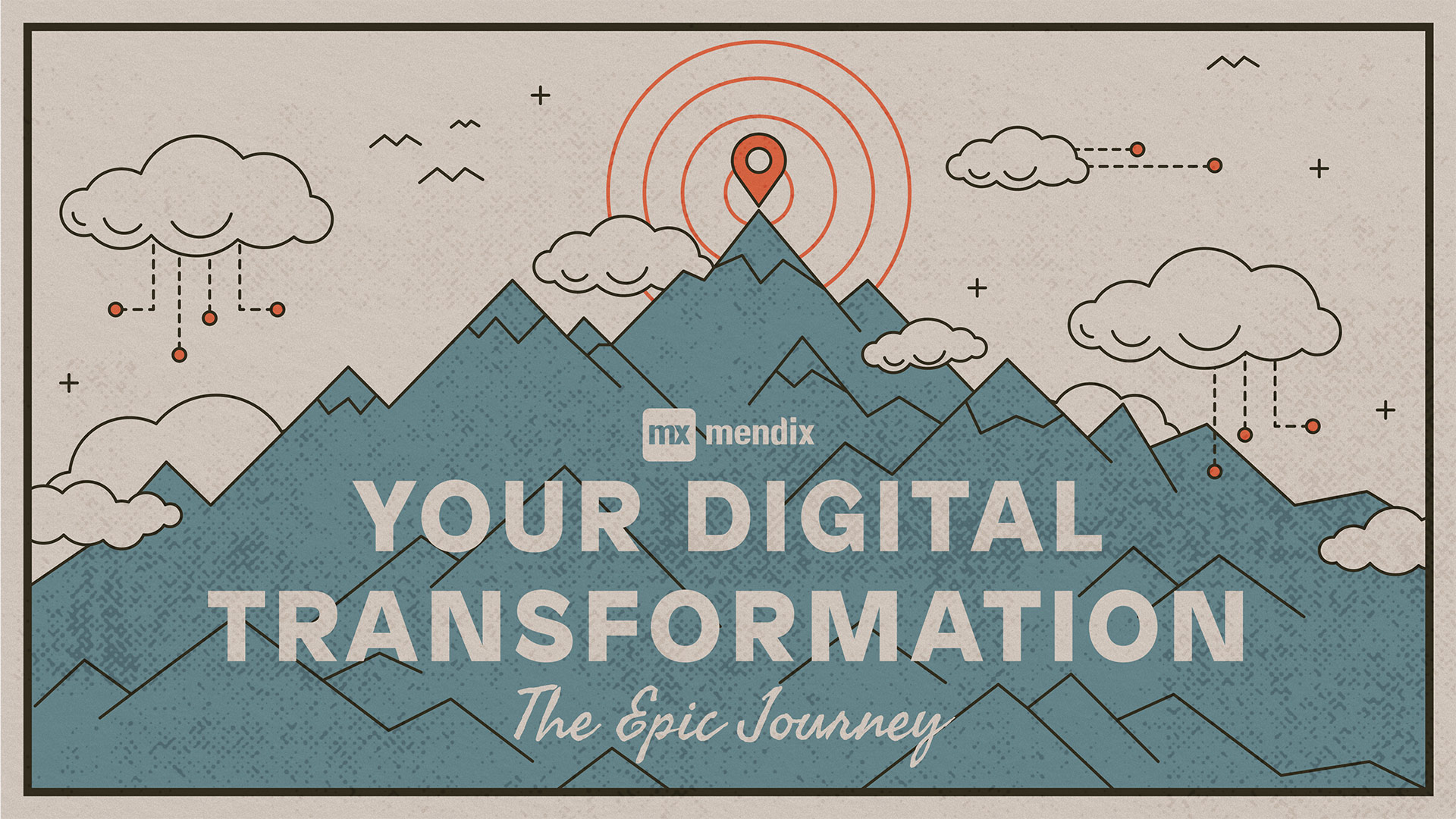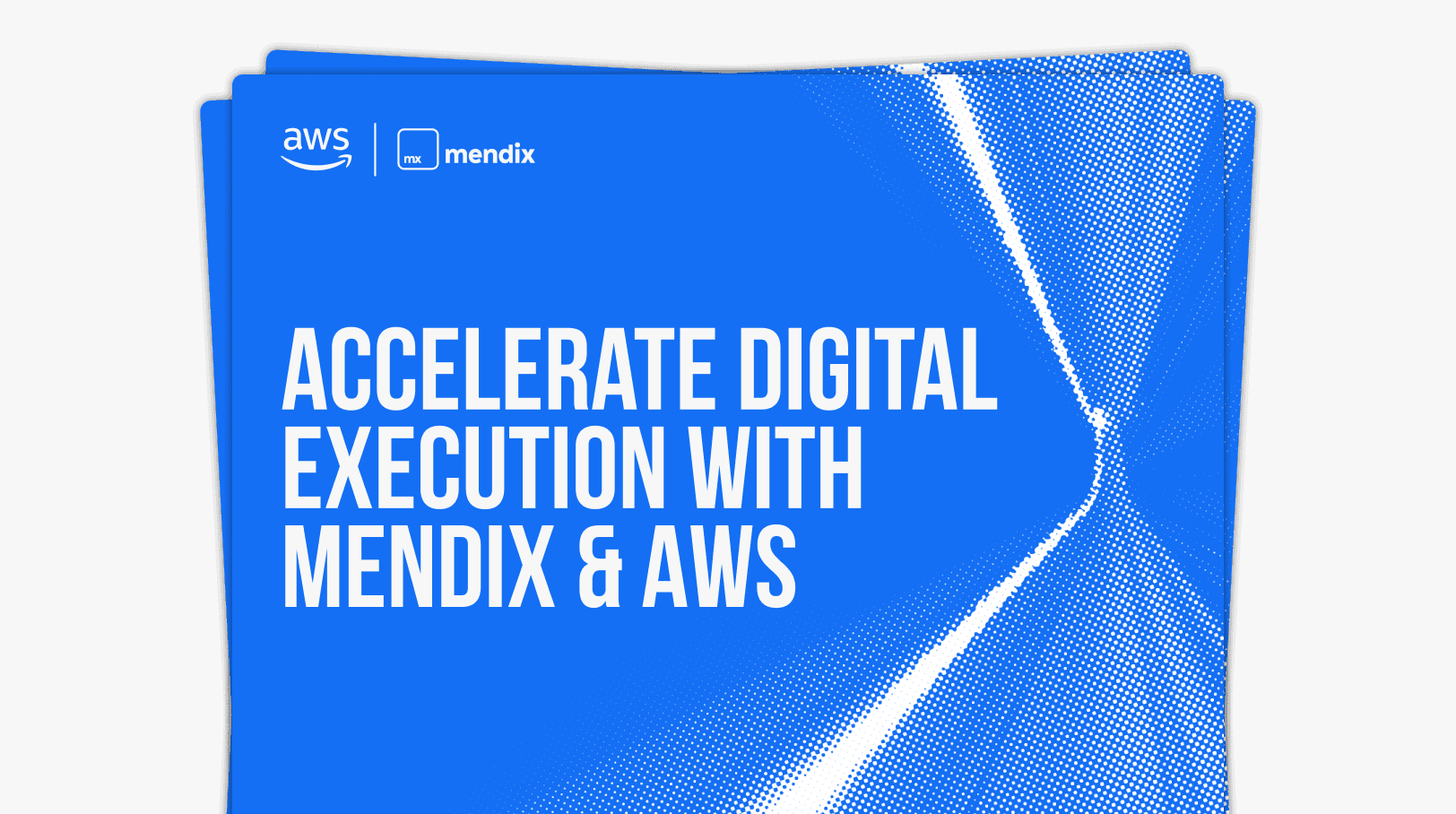
The Leading Low-Code Platform for Enterprise Digital Transformation
Take control of your digital journey with Mendix’s low-code approach
Take control of your digital journey with Mendix’s low-code approach
Digital transformation is many things, but it's no longer optional.
Ready or not, every organization needs a competitive, digital-first strategy to survive. Now, the only question is how?

The right technology is a key factor in a successful digital transformation approach. Your options include:
Enterprise development platforms that are equipped to conquer the complexities of digital transformation provide a more streamlined approach than disparate systems or complex coding.
In a single platform, you’ll have all the tools and resources necessary to build new applications and workflows and modernize outdated systems to accelerate your digital transformation.
A digital transformation platform equips you with the tools to execute your strategy — but where do you start?
Since our founding in 2005, Mendix has studied hundreds of customers to create a three-step roadmap to help you achieve your digital transformation goals and reduce associated risks. While your approach will be more detailed to your organization, this roadmap outlines a general strategy to jumpstart your journey.
Watch Mendix executives and customers share their methods of achieving digital transformation success in this series of videos.
Watch now
Low-code platforms provide the versatility and flexibility to meet modern business challenges and support continuous digital innovation.
As a visual development approach, low-code streamlines digital transformation initiatives. Drag-and-drop elements and intuitive interfaces lessen the burdens of high-code, enabling organizations to quickly build, test, maintain, and enhance the applications that fuel digital innovation.
The Mendix low-code application development platform helps organizations balance competing priorities with agility. Whether your goal is to automate manual processes or modernize mission-critical legacy systems, Mendix features the industry-leading no-code and low-code tools enterprises need to digitally transform and innovate.
Download the playbook, Accelerate Digital Execution with Mendix & AWS, to learn how digital transformation will unlock the potential of your cloud investments.
Digital innovation can transform business solutions from good to great. Here’s how to implement successful digital innovation strategies.
To stay competitive, you need more digital frameworks. Follow the three digital transformation phases: Start, Structure, Scale.
Take digital transformation and turn it into digital execution with these key factors.
Forrester named Mendix a low-code leader. See why and, more importantly, why this matters to you and your digitalization strategy.
Why do companies fail at digital transformation? Consider a lack of vision. Read and learn how to create a vision and communicate it properly.
The 4 Ps break down the complexities of digital transformation into 4 key areas: Portfolio, people, process, and platform.
Your portfolio is the pipeline of your highest-value innovation projects that require a faster development approach. The goal is to outline project stages, success criteria, and budget guidelines to methodically develop ideas and measure progress. Also develop a process across your business and IT teams so the prioritization of projects happens collaboratively and continuously.
You also need to identify the people who will deliver your innovation projects. Put together a cross-functional team of business and tech-savvy talent to collaborate with speed.
Your innovation team should establish a process for rapid development so they’re releasing new functionality and iterating continually based on user feedback. You will have to implement modern DevOps practices to build the deployment agility required to continuously iterate and release at scale.
Lastly, you will need to adopt a modern cloud-native platform architecture that eliminates constraints associated with legacy systems and integrates quickly with your existing applications. Your platform must allow you to bring your people and process together while maintaining control over your portfolio of applications that drive your digital transformation.
Digital transformation was incredibly vital before the pandemic, but it wasn’t at the top of the priority list for the majority of organizations. But COVID-19 turned ideas for the next fiscal year into urgent priorities almost overnight. Companies across the globe went into high gear strategizing and executing digital transformation initiatives to survive the pandemic.
At this point, disruption is the norm, and those that have yet to digitally transform risk becoming irrelevant.
Digital transformation won’t happen overnight. You’re evolving your technology, processes, and culture — all crucial focus areas that can take months or years, but will prove valuable in the long run. And since technology is constantly changing, your digital transformation is an ongoing commitment.
Expectations with arbitrary deadlines can hinder an organization’s focus on the transformation process, and missing those deadlines is when many organizations begin to stall their efforts and most will eventually fail at their digital transformation.
There are many reasons to digitally transform, but the driving factor depends on the organization. Lackluster customer experiences, manual business processes, unreliable core systems, and many other factors could be the catalyst for change.
External factors also play a role. Statista found that boosting operational efficiency during COVID-19 was the top priority for companies across the globe, which accelerated the adoption of digital technologies.





